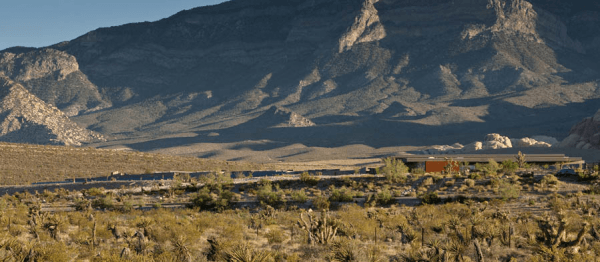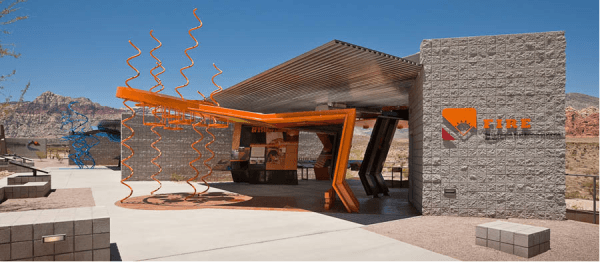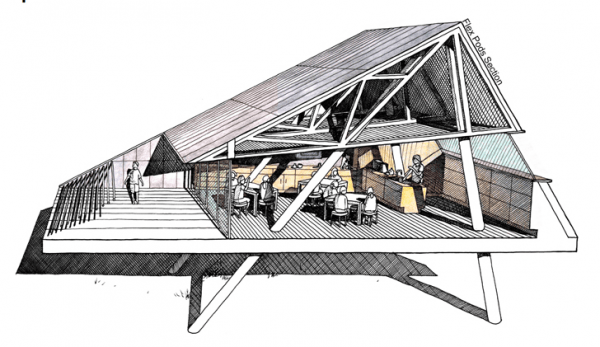Most of the visitors that throng to Las Vegas are not there to see nature. Nevertheless, there is some glorious desert nature to be seen. Just outside town, the Red Rock Canyon National Conservation Area was seeing its own visitor numbers shooting up, approaching a million a year. It was outgrowing its old visitor center. Now it has a wonderful and innovative new one.
The most remarkable thing about this design is how it addressed two linked concerns: limiting air conditioning energy costs, and keeping people outside. It makes perfect sense: the visitors all got in their cars and drove out from town to see nature; you’re designing an interpretive center to enhance their view of nature. It would be counterproductive to put the interpretive displays in a chilled indoor space that will make them dread going outside to continue the learning experience in the real world.

For the architects of Line and Space, LLC, keeping visitors focused outward into the desert was the priority. They put most of the displays outside, some well shaded, and some not, with designed microclimate “transition zones” between them. There is also a modest amount of conditioned indoor space, separated from the outdoors by specially designed revolving doors that give up only one-fiftieth of the volume of cooled air that a hinged door would.
For the times of year when the building needs heat (yes, those exist) the architects emplaced transpired solar walls that preheat air passively. For the times when it rains (yes, that happens too) the roof collects all rainwater and stores it for irrigation. At some point the existing septic system will be replaced with water treatment that returns treated water for toilet flushing. These water conserving systems are duly pointed out in the educational displays, since the need to conserve water is an essential feature of deserts.
The second most remarkable thing about the center is the way its bright-colored whimsical art pieces somehow fit with the differently gaudy landscape. (This patch of bedrock is so red that it jumps out at you even when you’re 38,000 feet up, on the heavily traveled flight corridor between New York and L.A.)

Solar panels provide about 20% of the center’s electricity. (That includes older buildings now used for administration offices.) The new center earned LEED gold certification, and was one of Architizer’s five Best of 2012 awardees in the sustainability category.

The Line and Space architects have carried on in this productive vein by designing the Red Rock Desert Learning Center, to be built just down the road. It will provide an outdoor school/camp experience for fifth graders who will stay in dorms on the site for up to 4 nights. Classrooms are in “flex pod” buildings insulated by deep wedge-shaped lofts of dead air space. LEED Platinum will be sought, at least for big parts of the project.